Teddy Roosevelt's death in 1919 at the age of just 60 left America in shock, though he’d quietly been battling both medical and emotional traumas for months before his demise.
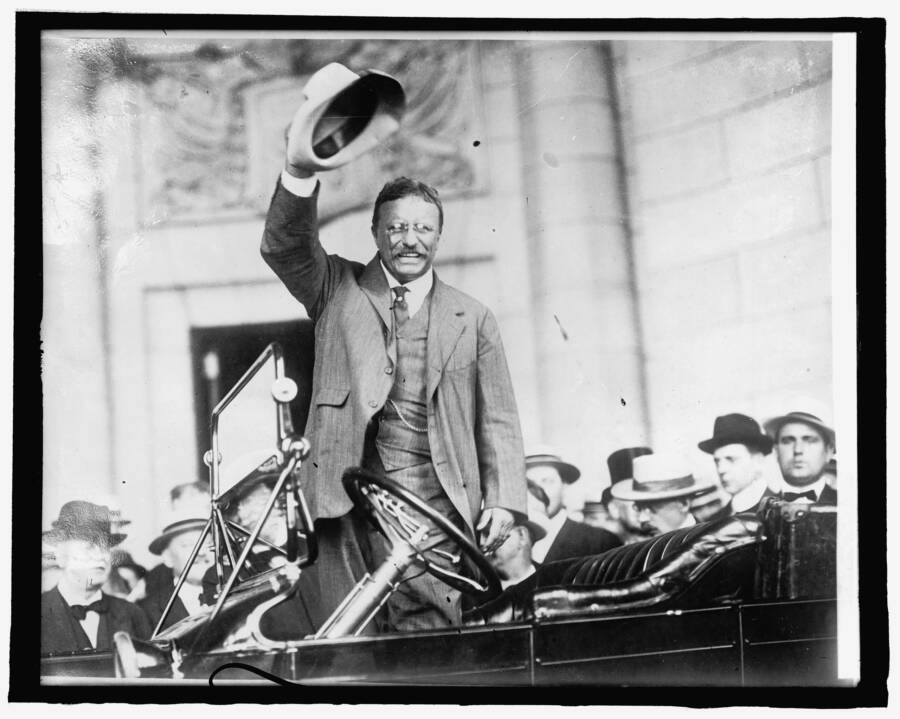
Library of CongressTheodore Roosevelt died after an active political and personal life that captivated many Americans.
After Theodore Roosevelt died on January 6, 1919, his son Archibald sent a somber telegram to his siblings. “The old lion,” he wrote, “is dead.”
Roosevelt’s death marked the end of a chapter in American history. Thrust into the national spotlight when he became president following the 1901 assassination of William McKinley, Roosevelt captivated Americans with his energy and youth. His expansion of executive power made Roosevelt the first “modern” president and left an indelible mark on U.S. politics.
Along the way, Roosevelt had frequently dodged death.
He’d survived childhood asthma, fought in the Spanish-American war, lived through an assassination attempt, and nearly died of fever in the Amazon. The former president carried a bullet in his chest, was partially blind and deaf, and had broken his ribs more than once, usually after falling from a horse.
Though he seemed as healthy as ever to many in his final months, Roosevelt had begun to suffer from both poor health and heartbreak. Doctors treated him for inflammatory rheumatism at the end of 1918, and he was “despondent” after his youngest son, Quentin Roosevelt, died during World War I.
Still, Theodore Roosevelt’s death at the age of 60 was sudden and shocking to those who had followed the trajectory of his life. “Death had to take Roosevelt sleeping,” quipped Vice President Thomas R. Marshall after hearing the news, “for if he had been awake, there would have been a fight.”
From A Sickly Boy To The ‘Bull Moose’
After his birth on Oct. 27, 1858, the specter of death seemed to haunt Theodore Roosevelt. “I was a sickly, delicate boy, suffered much from chronic asthma, and frequently had to be taken away on trips to find a place where I could breathe,” Roosevelt later recounted in his autobiography.
Yet Roosevelt would lead an exceptionally active life. Encouraged by his father to “make” his body as well as his mind, Roosevelt exercised vigorously to grow strong and dismissed a doctor’s warning as a young adult to limit strenuous activity because of his weak heart. “I am going to do all the things you tell me not to do,” Roosevelt told the doctor. “If I’ve got to live the sort of life you have described, I don’t care how short it is.”
After graduating from Harvard University in 1880, Roosevelt stayed true to his word. He chased down cattle thieves in Dakota Territory as a rancher in the 1880s and faced death head-on during the 1898 Spanish American War. In what Roosevelt later called the “greatest day of his life,” he led a volunteer cavalry regiment called the Rough Riders up San Juan Hill on July 1, helping to secure an American victory while under heavy fire.
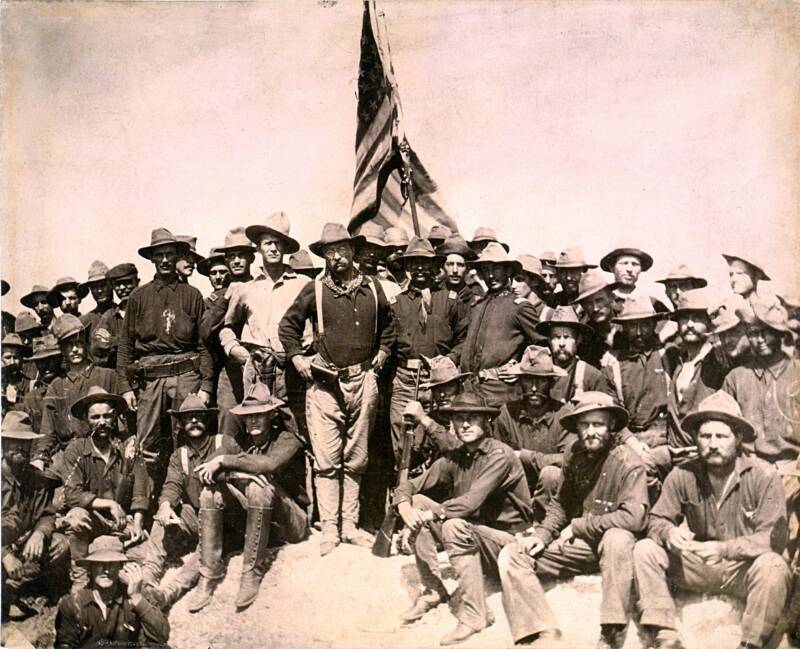
Public DomainTheodore Roosevelt became a national hero after leading the Rough Riders during the Spanish American War. 1898.
Roosevelt became a national hero in the process. He rode the wave of his new popularity to the governor’s mansion in New York and was soon afterward tapped to be William McKinley’s vice president. When McKinley was assassinated by Leon Czolgosz in 1901, Theodore Roosevelt became the youngest American president ever at the age of 42.
From there, Roosevelt would capture the public imagination both during and after his presidency. While in office, he injected a great deal of energy into the White House and expanded the president’s power and influence. And though he stepped down after two terms, Roosevelt shocked many by announcing his intention to run for an unprecedented third term in 1912.
During this campaign, the former president famously survived being shot in the chest by an assassin in Milwaukee, Wisconsin.
After revealing what had happened to the stunned crowd, Roosevelt declared that “it takes more than that to kill a bull moose,” and proceeded to speak for 84 minutes.
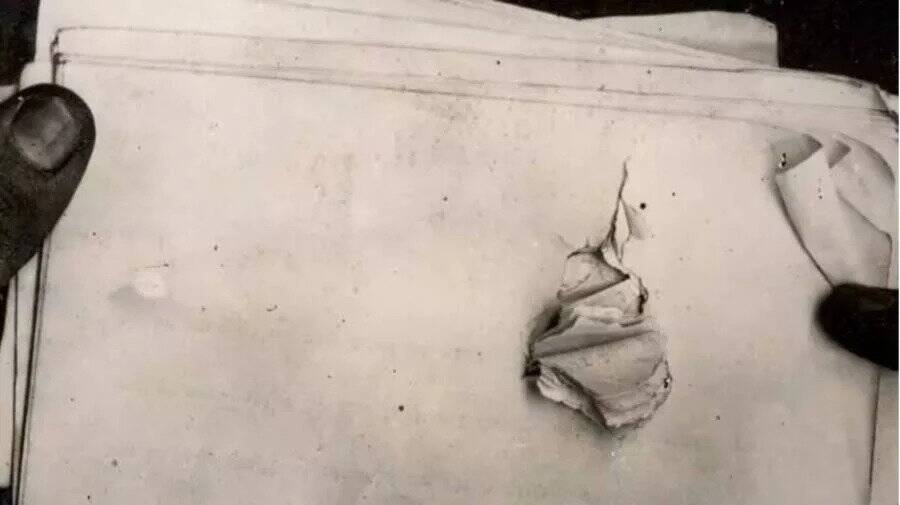
Theodore Roosevelt CollectionThe 50 page speech that Theodore Roosevelt had in his breast pocket when he was struck by an assassin’s bullet on Oct. 14, 1912, in Milwaukee, Wisconsin.
Roosevelt lost the presidential race to Woodrow Wilson and promptly went to explore the Amazon with his son Kermit. There, he fell ill with a fever and nearly died. “There were a good many days, a good many mornings when I looked at Colonel Roosevelt and said to myself, he won’t be with us tonight,” naturalist George Cherrie recalled, according to HISTORY. “And I would say the same in the evening, he can’t possibly live until morning.”
To the shock of many — including Roosevelt himself — the former president managed to pull through. By the time he returned to New York in May 1914, Roosevelt’s fever stood as just one more vanquished foe alongside an assassin’s bullet, Spanish soldiers in Cuba, and his childhood asthma. But Theodore Roosevelt’s death was just around the corner.
Theodore Roosevelt’s Heartbreak And Health Problems
The first domino that arguably led to Theodore Roosevelt’s death was the death of his youngest son, Quentin. In July 1917, Quentin Roosevelt had shipped out to Europe to fight in World War I alongside his three brothers. But on July 14, 1918, Quentin was shot down by German planes while providing air support during the Second Battle of the Marne.
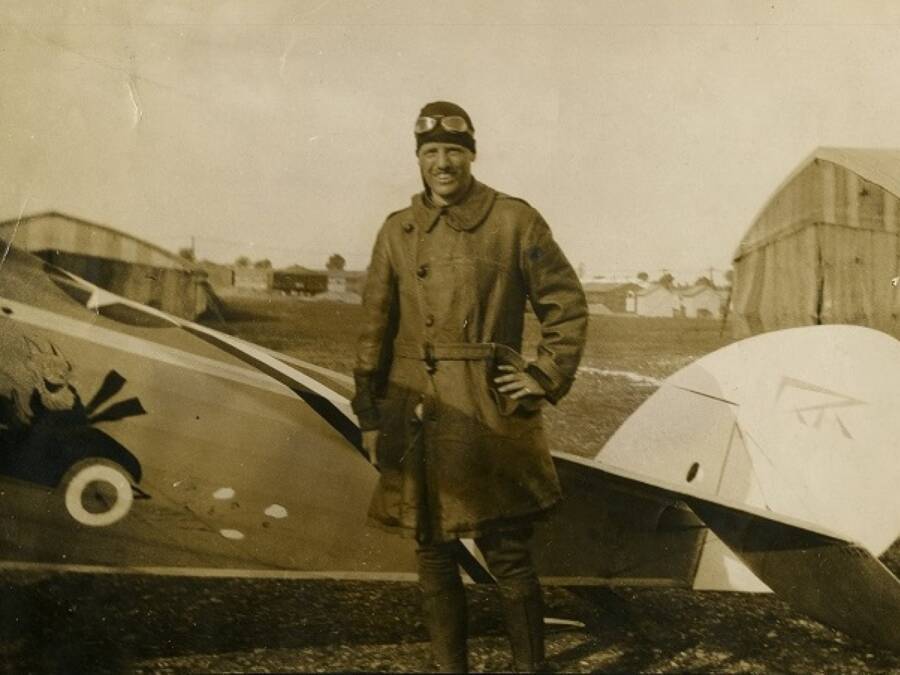
Sagamore Hill National Historic SiteQuentin Roosevelt was 20 years old when he was killed during World War I.
“Quentin’s mother and I are very glad that he got to the front and had a chance to render some service to his country,” Theodore Roosevelt said publicly. “And show the stuff that was in him before his fate befell him.”
Behind the scenes, however, the former president struggled with his son’s death. Roosevelt was “despondent” and “distraught” in the weeks after Quentin died. Though he kept up his public appearances, Roosevelt struggled with the idea that Quentin had gone to war to appease him.
“To feel that one has inspired a boy to conduct that has resulted in his death, has a pretty serious side for a father,” Roosevelt wrote to one of Quentin’s friends, according to the Library of America “and at the same time I would not have cared for my boys and they would not have cared for me if our relations had not been just along that line.”
Roosevelt continued with his active lifestyle — he was likely planning to run for president again in 1920 — but also started to suffer from ill health. In the fall, he experienced an “attack of inflammatory rheumatism” and was treated at the hospital.
Still, Theodore Roosevelt showed no signs of slowing down. “When he was asked about his health by visitors,” The New York Times reported after Roosevelt’s death in January 1919, “his reply was a vigorous ‘Bully!'”
But the former president’s days were numbered. And on Jan. 6, 1919, Theodore Roosevelt died suddenly at the age of 60.
How Teddy Roosevelt Died At The Age Of 60
The night before Theodore Roosevelt’s death, the “Bull Moose” seemed to be in good health. He spent the evening editing the copy of a Metropolitan magazine article that Roosevelt had written attacking President Wilson, which he enclosed in a letter to his son, Theodore Roosevelt, Jr.
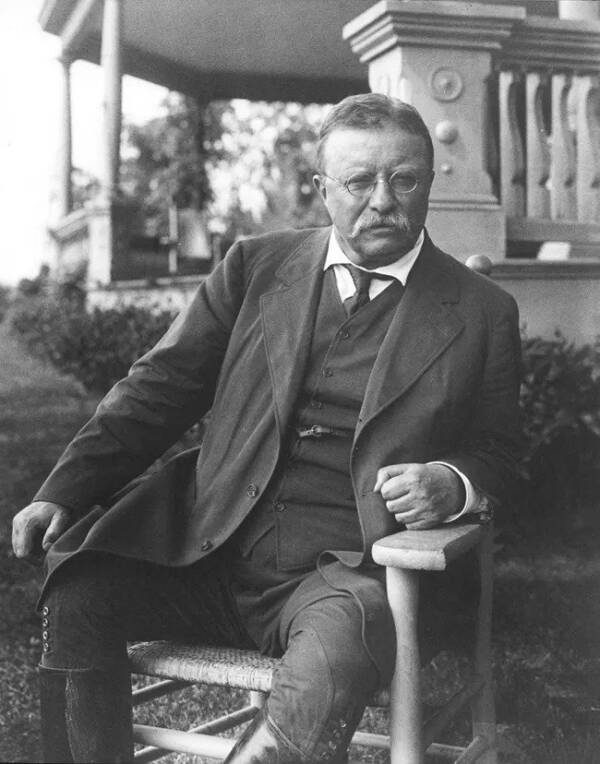
National Park Service/Sagamore Hill CollectionBefore Theodore Roosevelt died at the age of 60, he struck many who knew him — including his doctor — as being in good health.
Roosevelt also saw the family’s doctor, Dr. George W. Faller, who dropped by Roosevelt’s home in Oyster Bay, New York, around 8 p.m.
“He talked about almost everything except himself and his condition of health,” Faller recalled to The New York Times the next day. “His months of illness had not made much change in his appearance. He was ruddy, and, to outward appearances, nearly as sturdy as ever.”
Soon after Faller left, however, the doctor was called back when Roosevelt reported trouble breathing. Roosevelt told Faller that he felt his “heart would stop beating” but didn’t seem overly concerned. Faller remained with his patient until Roosevelt said that he felt better, and then he left.
At that point, Theodore Roosevelt got ready for bed. He spoke his last known words to his servant, James Amos, telling him to “please put out that light,” and then retired for the evening. Around 4 a.m., Amos grew alarmed at the sound of Roosevelt’s ragged breathing and called for a nurse. But by the time Faller was alerted and arrived back at the Roosevelt home, it was too late.
“When I was called again,” Faller said, “he was dead.”
Theodore Roosevelt died at 60 from what doctors ascribed to a “coronary embolism.” The former president, who had survived death on so many occasions, had merely died in his sleep.
He left behind a sizable legacy. In the immediate aftermath, Republicans fretted about what Roosevelt’s death would mean for the upcoming presidential election.
“Even leaders who were most distressed to hear of Col. Roosevelt’s death could not prevent being drawn into discussions about the possible effect on the present political situation, which everyone agrees will be tremendous,” the Bismarck Tribune reported after Roosevelt died.
In the end, Roosevelt’s Republicans triumphed over the Democrats (and Roosevelt’s fifth cousin, Franklin Delano Roosevelt, who was running as Democratic nominee James Cox’s vice president.) But Theodore Roosevelt’s impact would be larger than a single election.
While in office, Roosevelt transformed the role of president. His forceful, energetic personality made the executive office more powerful than it had ever been before, laying the groundwork for the modern presidency.
Theodore Roosevelt’s death marked the end of a remarkable life. The sickly boy became a “Bull Moose” and, in the process, transformed the nation.
After reading about the sudden death of Teddy Roosevelt, see how the president inspired the classic teddy bear toy. Or, look through these surprisingly dark facts about America’s Founding Fathers.





